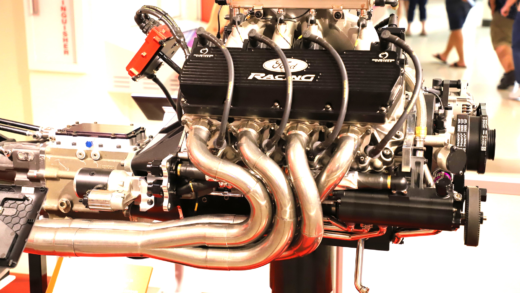Microlattice metal is a lightweight material revolutionizing the automotive industry. It is being used in vehicles like the BMW i3 and Audi concept cars to enhance performance and efficiency. However, challenges in manufacturing, including high costs and precision requirements, remain. When compared to traditional metals, microlattice metal offers superior strength-to-weight ratios and better energy absorption. The future of this material looks promising as technology advances, potentially leading to more sustainable and efficient vehicle designs.
What is Microlattice Metal?
Microlattice metal is a revolutionary lightweight material that is rapidly transforming the automotive industry. This innovative material consists of a lattice structure made from metal, which allows for an incredibly low density while maintaining strength. Imagine a structure similar to a spider web—strong yet light. Microlattice metal is often made from titanium or aluminum, which adds to its unique properties.
The Manufacturing Magic
Creating microlattice metal involves advanced manufacturing techniques such as 3D printing or additive manufacturing. The process begins with a digital design of the desired lattice structure. This design is then translated into a physical form through layer-by-layer construction. Using a powder bed fusion technique, tiny metal particles are selectively melted and fused together. This meticulous process allows for precise control over the material’s properties and dimensions.
Properties that Matter
Microlattice metal boasts several key characteristics that set it apart from traditional metals:
- Lightweight: The lattice structure significantly reduces weight, making it ideal for automotive applications.
- High Strength-to-Weight Ratio: Despite its lightness, microlattice metal maintains impressive strength, offering performance advantages.
- Energy Absorption: The unique structure can absorb energy efficiently, making it useful for impact resistance.
- Corrosion Resistance: When made from materials like titanium, it can resist corrosion, extending its lifecycle.
These properties make microlattice metal a game-changer for manufacturers looking to innovate in the automotive sector.
Featherweight Champion: The Lightweight Advantage of Microlattice Metal
Microlattice metal is considered a lightweight champion in the realm of automotive materials. Its unique lattice structure allows for significant weight reduction compared to traditional materials like steel and aluminum. For instance, microlattice metal can be up to 90% lighter than steel while maintaining comparable strength. This remarkable characteristic enables car manufacturers to create vehicles that are not only lighter but also more fuel-efficient.
Why does this matter? A lighter car requires less energy to accelerate, which translates to improved fuel economy. Additionally, the reduced weight enhances handling and overall performance. To put it simply, if your car is lighter, it can zip around corners like a sports car, while heavier vehicles lumber along like a tank.
Performance Booster: Enhancing Car Dynamics with Microlattice Metal
Microlattice metal doesn’t just save weight; it actively boosts automotive performance. The high strength-to-weight ratio means that engineers can design vehicles with more aggressive shapes without worrying about structural integrity. This flexibility allows for improved aerodynamics, contributing to higher speeds and better fuel efficiency.
Moreover, the energy absorption properties of microlattice metal make it ideal for crash safety. In the event of a collision, the material can absorb significant amounts of energy, reducing the impact force transferred to passengers. It’s like having a protective cushion that doesn’t add bulk to the vehicle.
Auto Applications: Potential Uses of Microlattice Metal in the Automotive Industry
Microlattice metal opens up a world of possibilities in automotive applications. Here are a few potential uses:
- Chassis Components: Lightweight microlattice structures can replace heavier traditional materials in the chassis, enhancing overall performance.
- Body Panels: Using microlattice metal for body panels can reduce weight while maintaining strength and safety standards.
- Crash Structures: The energy-absorbing capabilities make microlattice ideal for areas designed to crumple during an impact.
- Interior Elements: Lightweight components can improve vehicle handling and comfort, making long drives more enjoyable.
The integration of microlattice metal in these areas could revolutionize how cars are designed and manufactured, leading to a new era of lightweight, efficient vehicles.
Real-World Examples of Microlattice Metal in Cars
Microlattice metal is not just a concept; it’s being actively used in the automotive industry today. For instance, companies like BMW and Audi are exploring its applications in their vehicle designs. BMW’s i3 and i8 models have incorporated lightweight materials, including microlattice structures, to enhance performance and efficiency. Similarly, Audi’s concept cars have showcased microlattice metal components that contribute to reducing overall vehicle weight without compromising safety or durability.
These real-world applications highlight how microlattice metal is paving the way for the next generation of vehicles. By integrating this material, manufacturers are not only improving fuel efficiency but also pushing the boundaries of design and engineering.
Challenges in Microlattice Metal Manufacturing
While the benefits of microlattice metal are clear, manufacturing it comes with its own set of challenges. One of the primary hurdles is the cost of production. The advanced techniques required to create microlattice structures, such as 3D printing, can be expensive and time-consuming. This can deter manufacturers from adopting the technology on a larger scale.
Another challenge is the need for precision in the manufacturing process. Even slight errors in the design can lead to significant structural weaknesses. Additionally, there is a limited understanding of how microlattice metal behaves under various conditions, which can complicate its integration into existing automotive designs.
Microlattice Metal vs Traditional Metals
When comparing microlattice metal to traditional metals like steel and aluminum, the differences are striking. Microlattice metal offers a much higher strength-to-weight ratio, making it ideal for automotive applications. For example, it can be significantly lighter than steel, which allows for improved fuel efficiency and better handling.
- Weight: Microlattice metal can be up to 90% lighter than steel.
- Strength: Despite its lightness, it maintains structural integrity under stress.
- Energy Absorption: Its unique structure allows for better energy absorption during impacts.
These advantages make microlattice metal a compelling choice for the automotive industry, although challenges remain in its widespread adoption.
The Future of Microlattice Metal in Automotive Design
The future of microlattice metal in automotive design looks promising. As research and technology advance, the production processes are expected to become more efficient and cost-effective. This will likely lead to increased adoption across the industry.
Moreover, as manufacturers prioritize sustainability and fuel efficiency, microlattice metal could play a crucial role in meeting these goals. The lightweight nature of this material not only enhances vehicle performance but also supports eco-friendly initiatives by reducing fuel consumption.
In conclusion, microlattice metal represents a significant shift in how vehicles are designed and manufactured. Its unique properties and applications could redefine standards in the automotive industry, making it a material to watch in the coming years.





Comments are closed.